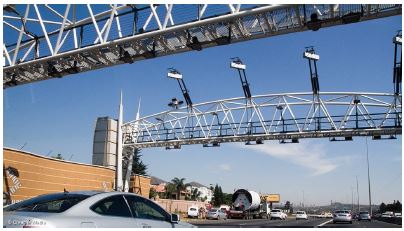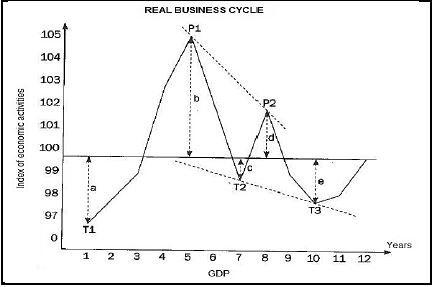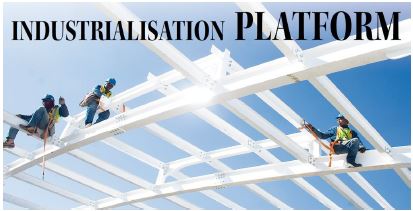ECONOMICS PAPER 1 GRADE 12 QUESTIONS - NSC PAST PAPERS AND MEMOS SEPTEMBER 2016
Share via Whatsapp Join our WhatsApp Group Join our Telegram GroupECONOMICS
PAPER ONE (P1)
GRADE 12
NSC PAST PAPERS AND MEMOS
SEPTEMBER 2016
INSTRUCTIONS AND INFORMATION
- Answer FOUR questions as follows in the ANSWER BOOK:
- SECTION A: COMPULSORY
- SECTION B: Answer TWO of the three questions.
- SECTION C: Answer ONE of the two questions.
- Number the answers correctly according to the numbering system used in this question paper.
- Write the number of the question above each answer.
- Read the questions carefully and start each question on a NEW page.
- Leave 2–3 lines between subsections of questions.
- Answer the questions in full sentences and ensure that the format, content and context of your responses comply with the cognitive requirements of the questions.
- Answer only the required number of questions. Answers in excess of the required number will NOT be marked.
- Use only black or blue ink.
- A non-programmable pocket calculator may be used.
- Write neatly and legibly.
QUESTIONS
SECTION A (COMPULSORY)
QUESTION 1 30 MARKS – 20 MINUTES
1.1 Various options are provided as possible answers to the following questions. Choose the answer and write only the letter (A–C) next to the question number (1.1.1–1.1.8) in the ANSWER BOOK, for example 1.1.9 D.
1.1.1 Taxes that relate to individual goods, are called taxes on ...
- production.
- products.
- income.
1.1.2 Trends are measured through ... in the economy.
- extrapolation
- moving averages
- economic indicators
1.1.3 Putting laws in place to regulate activities is known as ...
- deregulation.
- regulation.
- nationalisation.
1.1.4 A transaction relating to investment in businesses is called ... investment.
- portfolio
- other
- direct
1.1.5 Regional cooperation and integration among African states is provided by ...
- Nepad.
- SADC.
- WTO.
1.1.6 Cash incentives to assist foreign investors who want to invest in new manufacturing businesses in South Africa is offered by the ...
- Foreign Investment Incentive.
- Small and Medium Enterprise Development Programme.
- Black Business Supplier Development.
1.1.7 The initiative to enhance economic growth and create employment is known as ...
- The New Growth Path.
- Black Economic Empowerment.
- The Development Bank of South Africa.
1.1.8 According to the UN classification, South Africa falls in the … human development group of countries.
- lower
- middle
- higher (8 x 2)
(16)
1.2 Choose a description from COLUMN B that matches an item in COLUMN A. Write only the letter (A–I) next to the question number (1.2.1–1.2.8) in the ANSWER BOOK.
| COLUMN A | COLUMN B |
1.2.1 Leakages | A is calculated by multiplying the volume of final goods and services by their prices (8 x 1) (8) |
1.3 Give ONE term for each of the following descriptions. Write only the term next to the question number (1.3.1–1.3.6) in the ANSWER BOOK.
1.3.1 The effect of spending on national income
1.3.2 Cycles that last for the period of 3–5 years caused by adapting inventory levels in businesses
1.3.3 A record of export and import merchandise
1.3.4 A penalty applied by one or more countries on another country 1.3.5 Policies aimed at increasing the aggregate supply
1.3.6 Indicators concerned with inflation rates and the supply of money (6 x 1) (6)
TOTAL SECTION A: 30
SECTION B
Answer any TWO of the three questions from this section in the ANSWER BOOK.
QUESTION 2: MACROECONOMICS 40 MARKS – 30 MINUTES 2.1 Answer the following questions.
2.1.1 Name TWO types of financial markets. (2 x 1) (2)
2.1.2 How can the government use the fiscal policy if the economy is expanding too slowly? (1 x 2) (2)
2.2 Study the graph below and answer the questions that follow.
2.2.1 Which dotted line on the graph represents the length? (1)
2.2.2 When did the economy reach its highest peak? (1)
2.2.3 Briefly explain what the amplitude demonstrates. (2 x 2) (4)
2.2.4 How will a large amplitude during an upswing affect workers in general? (2 x 2) (4)
2.3 Study the picture below and answer the questions that follow.
 The tolls collected on a specific road are used to, inter alia; repay the loans obtained to finance the building, upgrading or improvement of the road. In addition, it provided a dedicated ongoing revenue stream, which enables the road to be adequately maintained and improved, independent of tax-based revenue. [Source: Adapted from www.sanral.co.za/e toll] |
2.3.1 What are tolls used for? (2 x 1) (2)
2.3.2 Discuss briefly collective goods as one of the pricing options. (2 x 2) (4)
2.3.3 How successful is the public sector in delivering public goods in South Africa? (4)
2.4 Explain the interaction between households and firms in a circular flow. (4 x 2) (8)
2.5 How successful is the supply side policy in South Africa to stimulate economic activity in the smoothing of business cycle? (4 x 2) (8) [40]
QUESTION 3: ECONOMIC PURSUITS 40 MARKS – 30 MINUTES
3.1 Answer the following questions.
3.1.1 Name TWO of South Africa’s industrial development strategies. (2 x 1) (2)
3.1.2 Which specifications will be considered when the GDP is calculated in assessing the performance of the South African economy? (1 x 2) (2)
3.2 Study the information below and answer the questions that follow.
EXPANDED PUBLIC WORKS PROGRAMME The EPWP is a key government initiative, which contributes to Government Policy Priorities in terms of decent work and sustainable livelihood, education, health, rural development, food securities and land reforms and the fight against crime and corruption. EPWP subscribes to the outcome which states, “Decent employment through inclusive economic growth”. [Source: Adapted from www.epwp.gov.za] |
3.2.1 What is the main objective of Expanded Public Works Programme (EPWP)? (2)
3.2.2 Identify any TWO sectors by which the EPWP create jobs. (2 x 2) (4)
3.2.3 How successful has the Expanded Public Works Programme been in achieving growth and development in South Africa? (4)
3.3 Study the table below and answer the questions that follow.
Births and deaths in SA for period 2013–2015
Year | Total number of births | Total number of deaths | Total number of Aids related deaths | % of Aids deaths |
2013 | 1 232 668 | 539 880 | 177 624 | 32,9 |
2014 | 1 242 070 | 516 929 | 151 040 | 29,2 |
2015 | 1 782 250 | 531 965 | 122 445 | 28,5 |
[Source: Stats SA, July 2015]
3.3.1 Name the social indicator used in the above table. (1)
3.3.2 What is the trend of the percentage Aids deaths from 2013 to 2015? (1)
3.3.3 Define the term life expectancy. (2)
3.3.4 Why is the above information important for the South African government? (2)
3.3.5 What positive role can the government play to increase health care in South Africa? (4)
3.4 Explain the negative environmental effects caused by activities in the North. . (4 x 2) (8)
3.5 What can the government/businesses sector do to increase the current low economic growth rate substantially? (4 x 2) (8)
[40]
QUESTION 4: MACROECONOMICS AND ECONOMIC PURSUITS 40 MARKS – 30 MINUTES
4.1 Answer the following questions.
4.1.1 Name TWO factors that will influence the demand for foreign exchange. (2 x 1) (2)
4.1.2 Why is GDP at market prices more than the GNI at market prices? (1 x 2) (2)
4.2 Study the extract below and answer the questions that follow.
REAPING THE BENEFITS OF REGIONAL INTEGRATION According to the Southern African Development Community (SADC) the benefits of belonging to a shared community in Southern Africa are reaching the lives of many people in the region. The SADC reveals that the regional integration has contributed to reduce poverty and enhance quality of life. [Source: Adapted from Southern African News, September 2015] |
4.2.1 What is the main benefit of regional integration for the people of Southern Africa? (1)
4.2.2 What role has the establishment of the Maputo Development Corridor played in the SADC? (1)
4.2.3 Discuss the main objectives of the National Development Plan. (4)
4.2.4 How successful has South Africa been with regional development compared to international best practices on good governance? (4)
4.3 Study the extract below and answer the questions that follow.
GOVERNMENT DECLARES 2015 THE YEAR OF SPECIAL ECONOMIC ZONES DELIVERY Out of South Africa’s ten prospective special economic zones, three are on the verge of implementation and, before the end of this year, one of them will be completed and implemented, says the Department of Trade and Industry. The DTI also established the SEZ programme to address weaknesses identified with the development zone (IDZ) programme. Two zones have been identified in Limpopo, including one in Musina, (petrochemicals, agro processing and logistics) one in Tubatse (platinum group metals) and one in Nkomazi, in Mpumalanga (agro processing). [Source: Adapted from m.engineeringnews.co.za/ article/] |
4.3.1 Mention any ONE zone that has been identified in the extract. (1)
4.3.2 What is the purpose of the DTI in establishing the SEZ programme? (1)
4.3.3 Explain the key difference between the IDZ and SEZ. (2 x 2) (4)
4.3.4 Why is Foreign Direct Investment (FDI) regarded as the most desired kind of investment in South Africa? (2 x 2) (4)
4.4 Explain methods used to support export promotion. (4 x 2) (8)
4.5 Why is education so important as a key social indicator in South Africa? (4 x 2) (8)
[40]
TOTAL SECTION B: 80
SECTION C
Answer ONE of the two questions from this section in the ANSWER BOOK.
STRUCTURE OF ESSAY | MARK ALLOCATION: |
Introduction | Max. 2 |
Body:
| Max. 26 Max. 10 |
Conclusion Any relevant higher order conclusion that should include:
| Max. 2 |
TOTAL | 40 |
QUESTION 5: MACROECONOMICS 40 MARKS – 40 MINUTES
Foreign trade is becoming increasingly important for the economic well-being of a country. The more open and integrated a country is with the rest of the world the better its chances of improving the economic welfare of its citizens.
- Discuss the main supply reasons of international trade. (26 marks)
- How effective is international trade for South Africa? (10 marks) [40]
QUESTION 6: ECONOMIC PURSUITS 40 MARKS – 40 MINUTES
The purpose of fiscal policy is to stimulate economic growth and employment and to ensure redistribution of income.
- Discuss this statement by focusing on the instruments of fiscal policy in the South African context and how it ensures the desirable redistribution of income. (26 marks)
- In your opinion, how successful is the South African government in providing the basic needs for disadvantaged people? (10 marks)
[40]
TOTAL SECTION C: 40
GRAND TOTAL: 150


